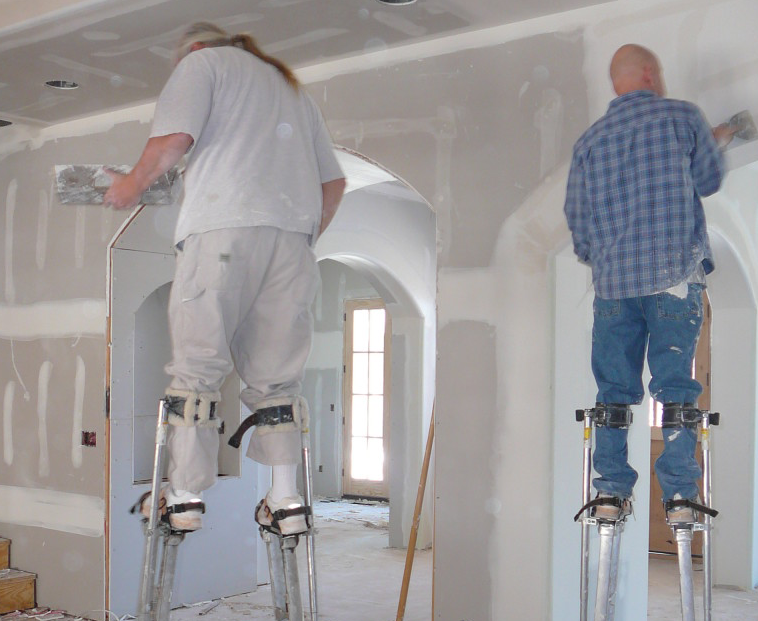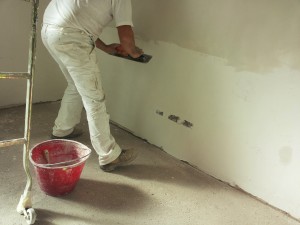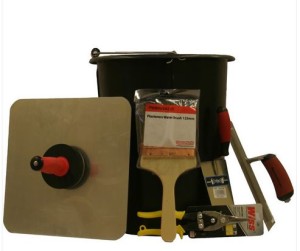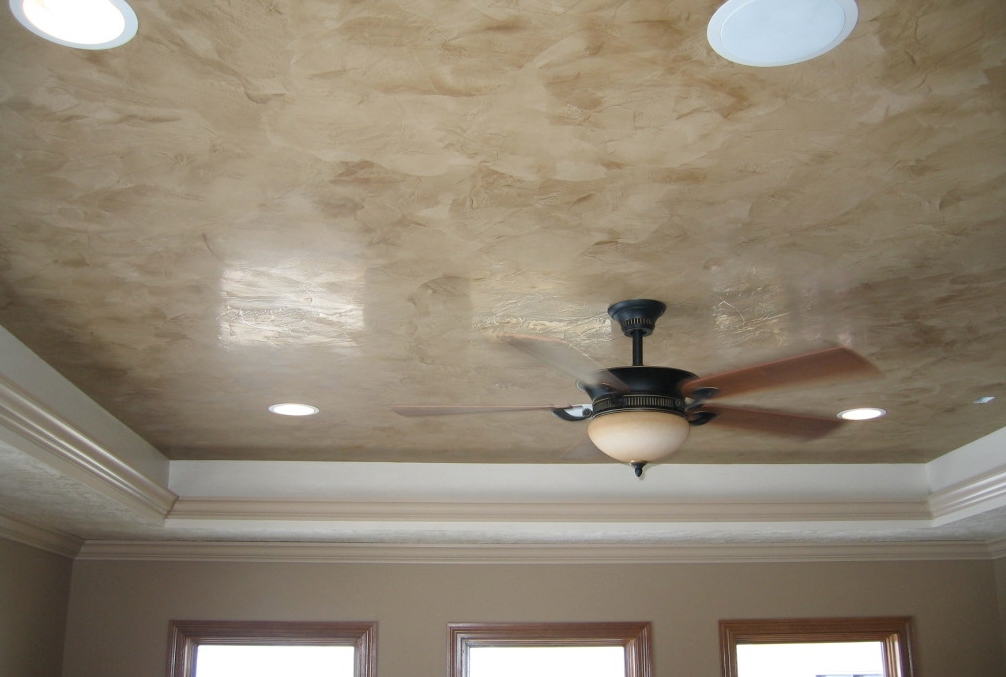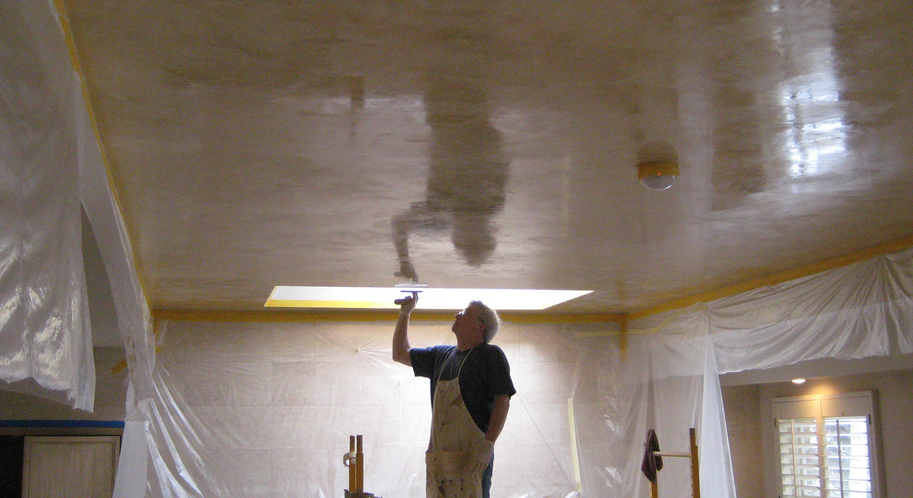Unless you are moonlighting as one of the Chicago Bulls or LA Lakers, chances are that during your plastering career you might have come across the issue of how to get your plaster in those hard to reach places, such as ceilings and the tops of walls.
Most ceilings are well over six foot high and in the past a milk crate, step ladder or plank balanced on two crates did the trick. But, with too many dangerous accidents occurring from unsafe working environments and many building sites and businesses clamping down on the health and safety pitfalls involved, it might be that over the years you’ve looked to an alternative solution.
One of the options you can try is plasterers’ stilts. And if you are wondering what are plasterers’ stilts and the image of clowns in a circus keeps popping into your head then don’t be disheartened.
Contrary to the sort of stilts that are used to wow the crowds under the big top, these are sturdy, easy to put on and take off, don’t take years of practice to perfect using them and if used in the right circumstances can be very safe.
Take a look at our stilt range for some of the industry leading stilts for plastering!
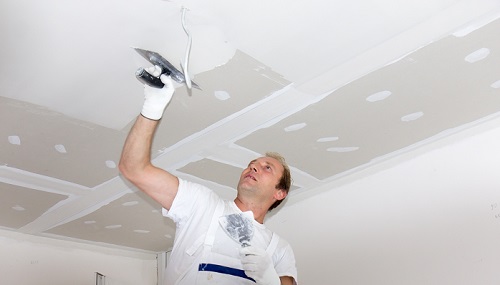
How can Plasterers Stilts help?
Stilts for plasterers have been used in the drywall and suspended ceiling industries for years and can be an extremely useful tool to have in the workplace, saving you time, effort and labour.
Once you’ve got the hang of them, they make an excellent addition to your toolkit and, if you would like to know how else they can help, there are several benefits and a few things to bear in mind when thinking of investing in a pair.
- Stilts will save you time on climbing up and down ladders and moving them from place to place – instead you can move easily across the area you are plastering.
- Stilts will help reduce the risk of over reaching to get to those hard to reach areas, which can lead to muscle strain, fatigue and falls.
- They are a safer option to balancing on ladders and other stands, offering you greater stability when both moving and standing still.
- They are sturdy, act as an extension to your lower leg, have a solid large base and are easy to balance on.
- They can be fitted in seconds using quick release straps and an adjustable working height.
But make sure…
- The floor where you are plastering is clear of all debris and obstacles.
- Remember to make sure that everything you need is within reach, a little higher up than you might usually be used to.
- Have a practice on them while others are around and make sure if you’re going to be working on your own that you can take them off and put them on again easily in between coats.
- Never try walking backwards. Chances are it’s not going to end up a pretty picture.
- Don’t rush and take your time, especially if you’re just getting used to them.
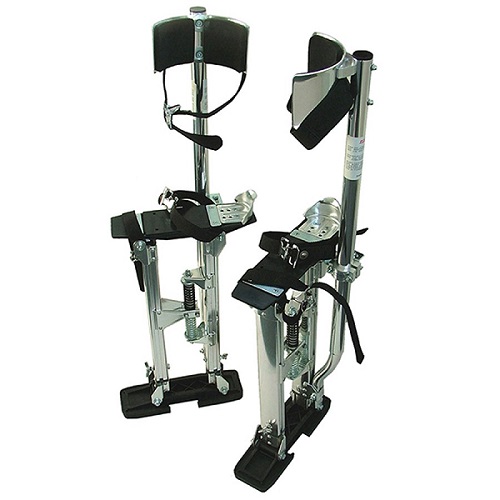
Best Stilts For Plastering In The UK
If you’re looking for some cheap stilts for plastering but ones that are leaders in the industry, then look no further! We have an excellent set of plasterers’ stilts in stock from the popular and dependable quality budget brand Faithfull, which have been designed to save time in both the plastering and decorating industries.
For a Faithfull Plasterers Stilts overview, you might be pleased to know that, while they are extremely well made, using lightweight aluminium, they are sturdy, efficient and adjustable, coming in six two-inch increments which range from 18-30 inches.
The maximum load bearing amount is 114kg (so remember to take into account your hawk, trowel and plaster) and they won’t break the bank like other plasterers’ stilts.
Plasterers Stilts For Sale – Buy Online Today
If you’re a professional plasterer who is looking for an easy and effective solution to getting a job finished in even quicker time, then maybe stilts could be your best bet.
You can order your stilts online today from Gypsumtools and have them with you on site tomorrow, when you order before 12pm.
We also offer free delivery on orders over £99 to any location across the UK, so you can rest assured you will be only paying for the goods you receive.
Have a browse through our extensive range of products online, or give us a call today for more information.

